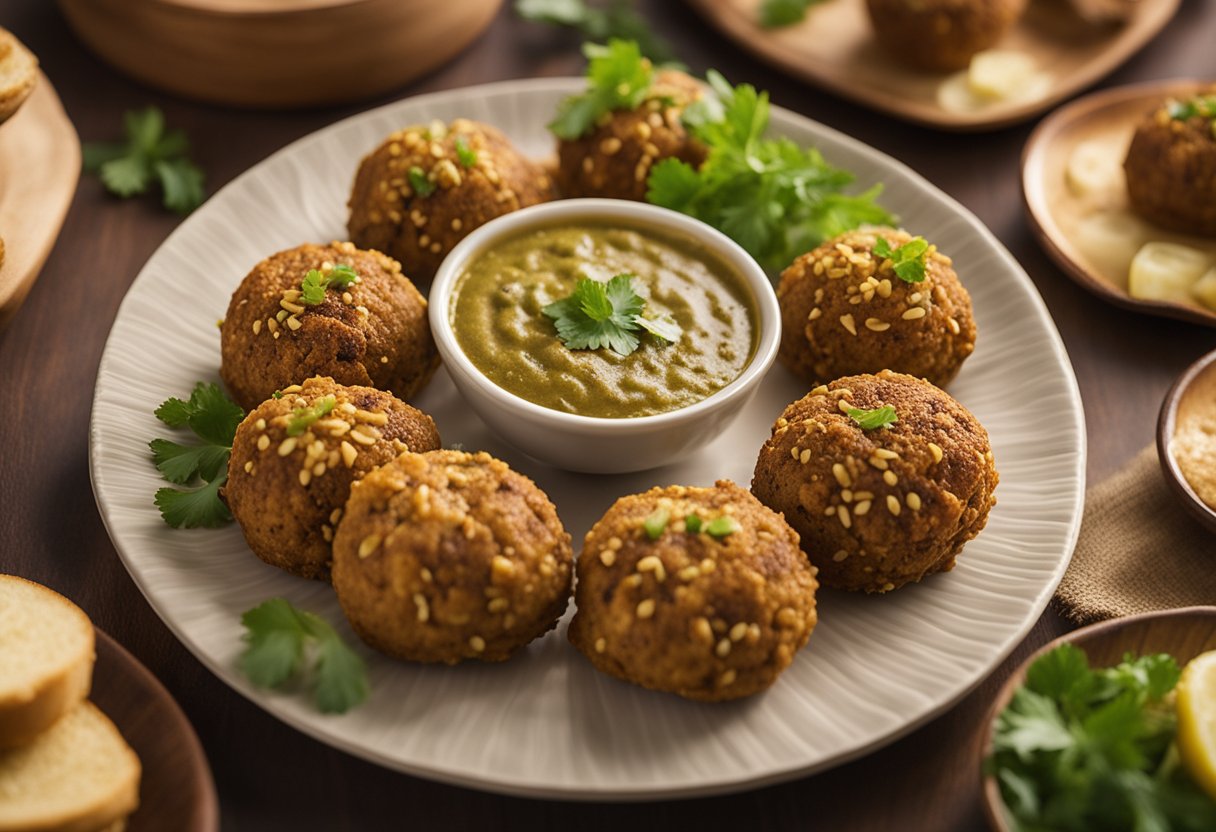Falafel is a popular Middle Eastern dish that has gained a lot of popularity in recent years. It is a vegan-friendly, protein-packed snack that can be enjoyed on its own or as a filling for sandwiches and wraps. Falafel is made from ground chickpeas or fava beans mixed with herbs and spices, formed into balls or patties, and then deep-fried until crispy on the outside and tender on the inside.
Table of Contents
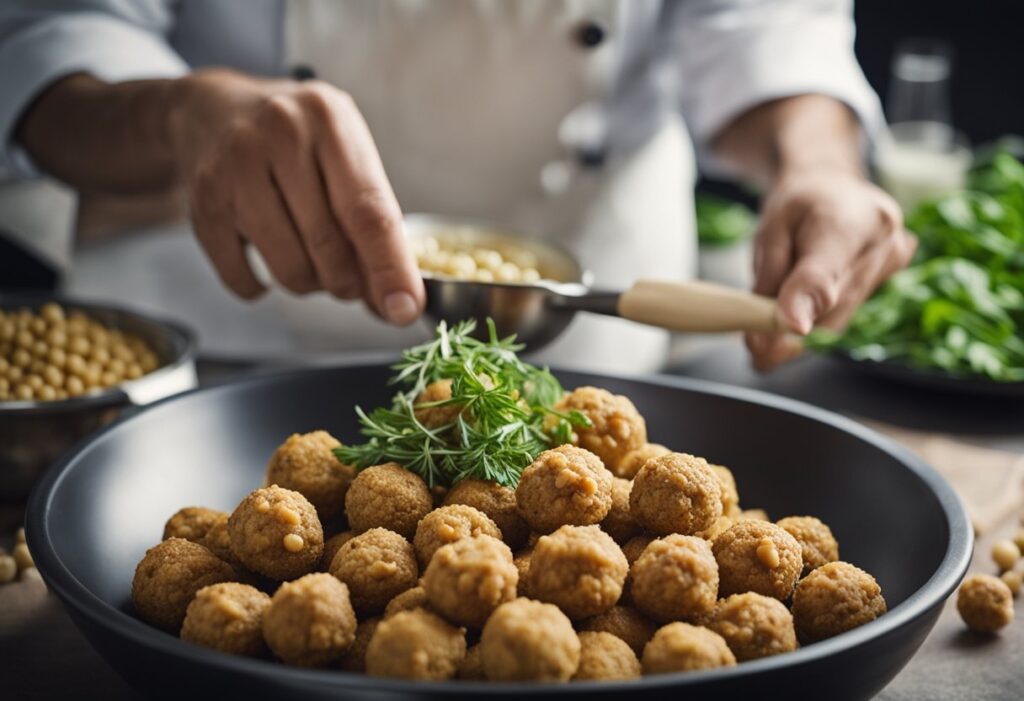
With so many variations of falafel available, it can be challenging to choose the right recipe. This article presents ten different falafel recipes that are sure to satisfy any craving. From classic chickpea falafel to unique variations like sweet potato falafel and beetroot falafel, this article offers a diverse range of recipes that cater to different tastes and dietary preferences. Whether you are a seasoned falafel enthusiast or a first-time falafel maker, this article has something for everyone.
History of Falafel
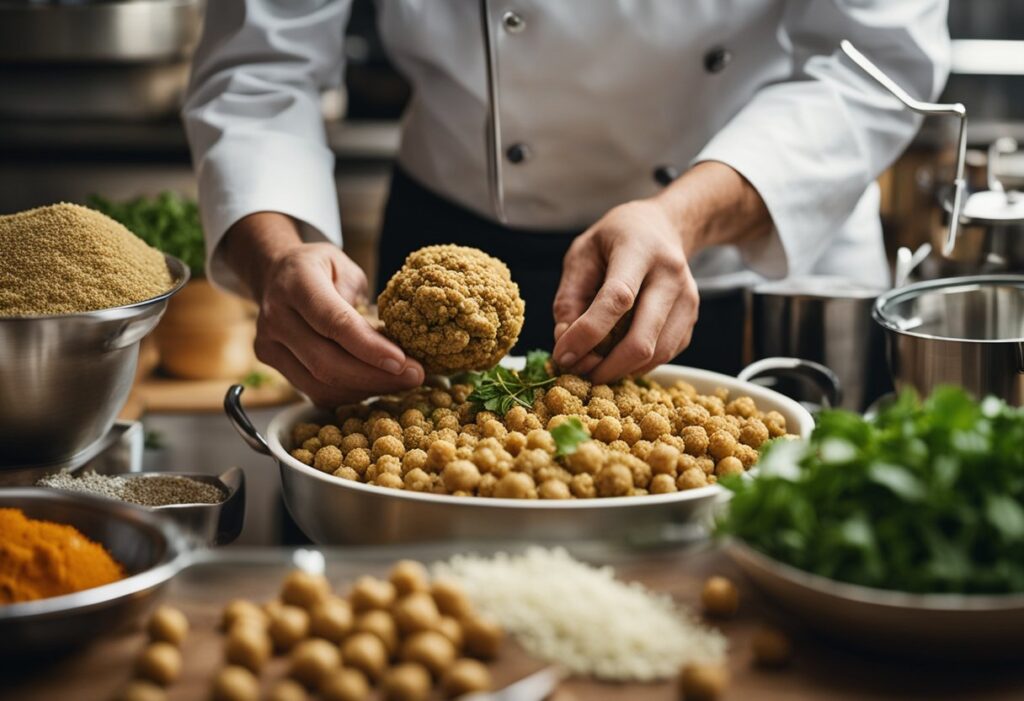
Falafel is a popular Middle Eastern food that has been enjoyed for centuries. The exact origin of falafel is unknown, but it is believed to have originated in Egypt. Some sources suggest that falafel was first made by Coptic Christians as a replacement for meat during Lent.
Falafel is made from ground chickpeas or fava beans, mixed with herbs and spices, and then deep-fried. It is typically served in a pita bread with vegetables and a sauce, such as tahini or hummus.
Falafel has become popular around the world, with many different variations and adaptations of the original recipe. In the United States, falafel is often served as a vegetarian or vegan alternative to meat, and can be found in many Middle Eastern restaurants and food trucks.
Despite its popularity, falafel has sometimes been a source of controversy. In 2018, the New York Times published an article claiming that falafel was originally an Israeli dish, which sparked outrage among many in the Middle Eastern community who felt that their cultural heritage was being appropriated.
Regardless of its origins, falafel is a delicious and nutritious food that continues to be enjoyed by people around the world.
Essential Ingredients for Falafel
Falafel is a popular Middle Eastern dish that is loved by many. It is a delicious vegetarian option that is packed with flavor and nutrition. To make the perfect falafel, it is important to use the right ingredients. Here are some essential ingredients that you need to make falafel:
Chickpeas
Chickpeas are the main ingredient in falafel. They are high in protein, fiber, and other essential nutrients. It is important to use dried chickpeas instead of canned ones to make falafel. Canned chickpeas are too soft and will not give you the right texture for falafel. Soak the dried chickpeas overnight to make them soft and easy to blend.
Herbs and Spices
Herbs and spices are what give falafel its delicious flavor. The most important herbs and spices to use in falafel are parsley, cilantro, cumin, and coriander. These herbs and spices add a fresh and fragrant taste to the falafel. You can also add other herbs and spices like mint, dill, or paprika to give your falafel a unique taste.
Onion and Garlic
Onion and garlic are essential ingredients in falafel. They add a savory and pungent flavor to the falafel. Use a yellow onion and fresh garlic cloves for the best results. Make sure to chop them finely before adding them to the falafel mixture.
Baking Powder
Baking powder is what makes falafel light and fluffy. It helps the falafel to rise while frying, giving it a crispy exterior and a soft interior. Make sure to use baking powder instead of baking soda, as baking soda can make the falafel taste bitter.
Oil
Oil is needed to fry the falafel. Use a neutral oil like canola or vegetable oil for frying. Make sure the oil is hot enough before adding the falafel to the pan. Test the oil by dropping a small piece of falafel into the pan. If it sizzles and floats to the top, the oil is ready.
By using these essential ingredients, you can make delicious and authentic falafel at home. Experiment with different herbs and spices to create your own unique falafel recipe.
Traditional Falafel Recipe
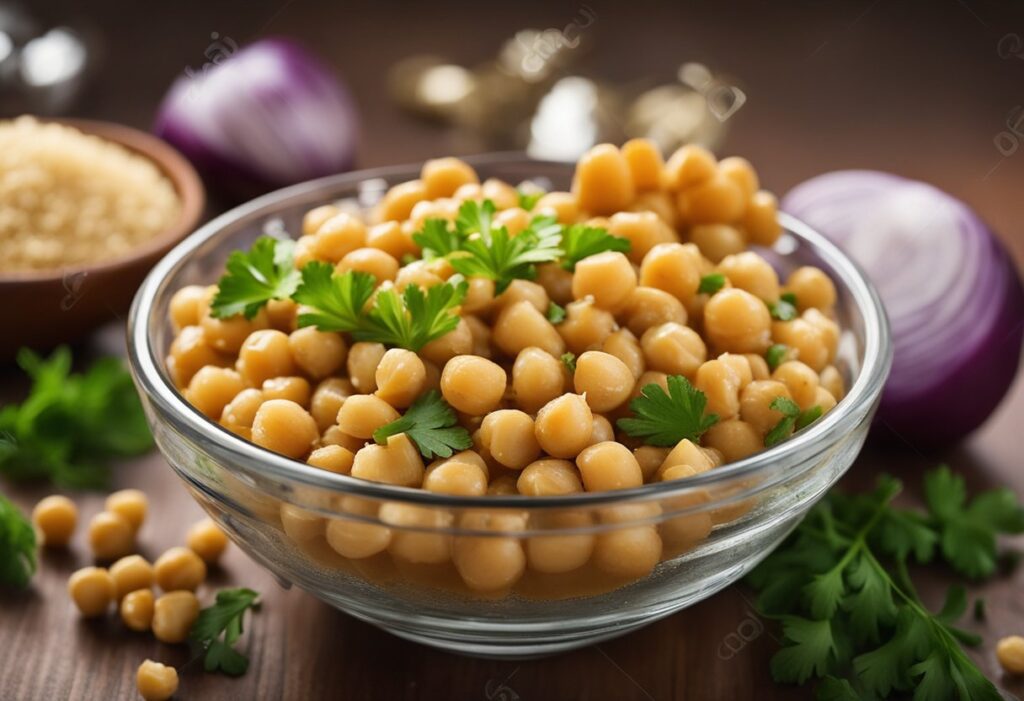
Soaking Chickpeas
To make traditional falafel, the first step is to soak the chickpeas overnight in water with baking soda. This helps to soften the chickpeas and make them easier to blend. The next day, the chickpeas should be drained and rinsed thoroughly.
Blending Ingredients
After soaking the chickpeas, the next step is to blend them with the other ingredients. The traditional recipe includes garlic, onion, parsley, coriander, cumin, salt, and pepper. Some recipes also call for a small amount of flour or baking powder to help bind the mixture together.
The mixture should be blended until it forms a coarse paste. It’s important not to over-blend the mixture, as this can make the falafel too smooth and dense.
Forming Falafel Balls
Once the mixture is blended, it’s time to form it into balls. Using wet hands, the mixture should be rolled into small balls, about the size of a ping pong ball. The balls should be placed on a tray lined with parchment paper and chilled in the refrigerator for at least 30 minutes.
Frying Falafel
The final step is to fry the falafel balls until they are crispy and golden brown. Traditionally, falafel is deep-fried in vegetable oil, but it can also be shallow-fried or baked in the oven.
The falafel balls should be fried in batches until they are cooked through and crispy on the outside. Once they are done, they can be served hot with tahini sauce, hummus, or other traditional accompaniments.
Overall, the traditional falafel recipe is a simple and delicious way to enjoy this classic Middle Eastern dish. With a few basic ingredients and some careful preparation, anyone can make authentic falafel at home.
Baked Falafel Variation
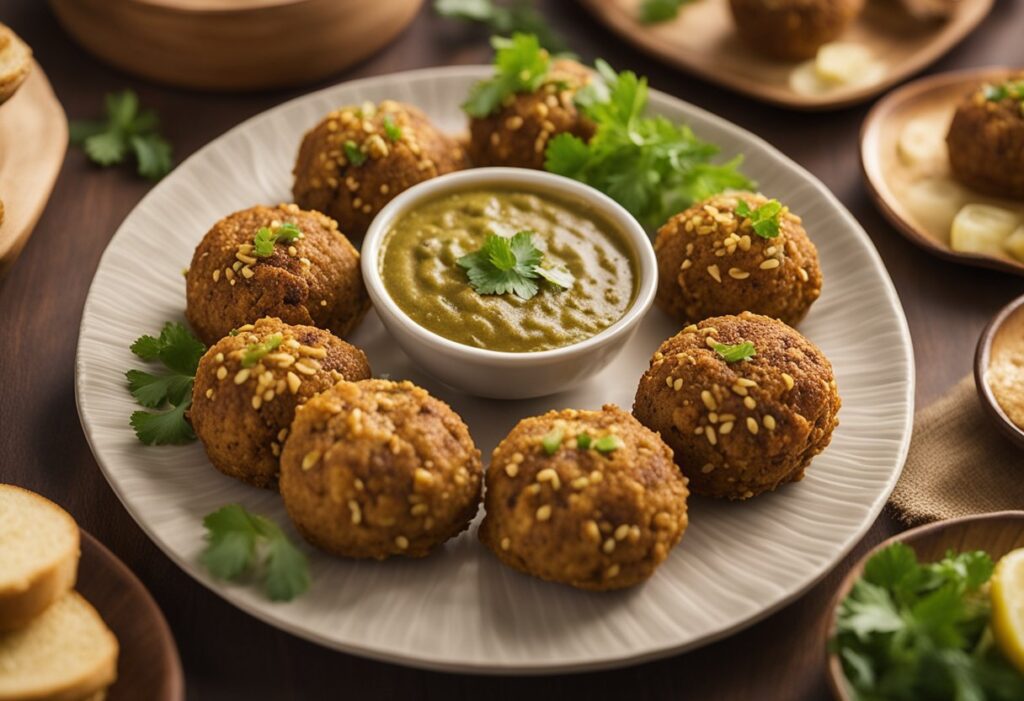
For those looking for a healthier alternative to traditional fried falafel, baked falafel is a great option. Baked falafel is made by shaping the mixture into balls or patties and baking them in the oven until crispy on the outside and tender on the inside.
To make baked falafel, start by preparing the falafel mixture as usual, using chickpeas, herbs, spices, and breadcrumbs. Then, shape the mixture into balls or patties and place them on a baking sheet lined with parchment paper. Brush the falafel with a little bit of oil and bake them in a preheated oven at 375°F for 20-25 minutes, or until golden brown and crispy.
Baked falafel can be served in a pita with tahini sauce, hummus, and fresh vegetables, or as a side dish with a salad or roasted vegetables. It is a great option for those who are looking for a healthier and lighter version of traditional fried falafel.
Overall, baked falafel is a delicious and nutritious variation of the classic Middle Eastern dish that is easy to make and perfect for a quick and healthy meal.
Herbal Falafel Twist
Incorporating Fresh Herbs
Adding fresh herbs to falafel can give it a delicious and unique flavor. Some herbs that work well with falafel include parsley, cilantro, mint, and dill. These herbs can be chopped finely and mixed into the falafel mixture before frying.
Parsley is a popular choice for falafel as it adds a fresh and slightly bitter taste. Cilantro, on the other hand, gives falafel a bright and citrusy flavor. Mint adds a cool and refreshing taste, while dill gives a slightly sweet and tangy flavor.
Herb Pairings
Pairing herbs with falafel can elevate the dish to a whole new level. Here are some herb pairings that work well with falafel:
- Parsley and lemon: The bitterness of parsley complements the acidity of lemon, making for a refreshing and zesty falafel.
- Cilantro and jalapeno: The citrusy flavor of cilantro pairs well with the spiciness of jalapeno, giving falafel a bold and flavorful kick.
- Mint and cucumber: The coolness of mint pairs perfectly with the refreshing taste of cucumber, making for a light and summery falafel.
- Dill and yogurt: The sweetness of dill complements the tanginess of yogurt, making for a creamy and flavorful falafel.
By incorporating fresh herbs and pairing them with complementary flavors, one can create a unique and delicious twist on traditional falafel.
Gluten-Free Falafel Options
For those who are gluten intolerant or have celiac disease, finding suitable options for their dietary requirements can be challenging. Fortunately, there are several gluten-free falafel recipes available that are just as delicious as their traditional counterparts.
One option is to use chickpea flour instead of wheat flour. Chickpea flour is naturally gluten-free and has a similar texture to wheat flour, making it a great substitute in recipes. Another option is to use gluten-free breadcrumbs or ground nuts as a coating for the falafel balls.
Another way to make gluten-free falafel is to use alternative ingredients in place of wheat flour. For example, some recipes use quinoa flour, almond flour, or coconut flour. These flours not only make the falafel gluten-free but also add a unique flavor to the dish.
It’s important to note that when making gluten-free falafel, it’s crucial to ensure that all ingredients used are gluten-free. Cross-contamination can occur if utensils or equipment used to prepare the falafel have come into contact with gluten-containing ingredients.
Overall, there are many delicious and creative ways to make gluten-free falafel. With the right ingredients and preparation, those with gluten intolerance or celiac disease can still enjoy this Middle Eastern delicacy.
Serving Suggestions
Falafel in Pita
Falafel in pita is a classic way to enjoy this Middle Eastern dish. To make it, simply stuff your freshly fried falafel balls into a warm pita pocket along with some chopped tomatoes, cucumbers, and onions. You can also add a dollop of tahini sauce or hummus for extra flavor. If you want to take it up a notch, try adding some pickled turnips or a sprinkle of sumac.
Falafel Salad Bowls
For a lighter option, try serving your falafel over a bed of greens. Start with a base of mixed greens, then add some sliced cucumbers, cherry tomatoes, and red onions. Top it off with a few falafel balls and a drizzle of lemon-tahini dressing. You can also add some feta cheese or olives for a Mediterranean twist.
Falafel Platter
If you’re serving a crowd, a falafel platter is a great option. Arrange your freshly fried falafel balls on a large platter, then add some sliced tomatoes, cucumbers, and onions. Serve it with a side of tahini sauce or hummus, and some warm pita bread on the side. You can also add some tabbouleh or baba ganoush for extra variety.
No matter how you choose to serve your falafel, it’s sure to be a hit with your guests. With these simple serving suggestions, you can enjoy this classic Middle Eastern dish in a variety of delicious ways.
Sauces and Dips
Tahini Sauce
Tahini sauce is a popular Middle Eastern condiment that is often served with falafel. It is made from tahini paste, lemon juice, garlic, and water, and has a creamy, nutty flavor. To make tahini sauce, simply whisk together tahini paste, lemon juice, garlic, and water until smooth. Adjust the consistency by adding more water if needed. Tahini sauce can be stored in an airtight container in the refrigerator for up to a week.
Yogurt-Based Dip
Another popular dip for falafel is a yogurt-based dip. This dip is made from plain yogurt, cucumber, garlic, and dill. It has a refreshing flavor that pairs well with the spiciness of the falafel. To make the dip, simply mix together the yogurt, chopped cucumber, minced garlic, and chopped fresh dill. Season with salt and pepper to taste. This dip can be stored in an airtight container in the refrigerator for up to three days.
Using these two dips, you can create a variety of flavors for your falafel. Serve them alongside your falafel or drizzle them on top for added flavor. Experiment with different ratios and ingredients to find the perfect combination that suits your taste buds.
Storing and Reheating Tips
Falafels are best enjoyed fresh and hot, but if you have leftovers or want to make a big batch ahead of time, here are some tips for storing and reheating them.
Storing
Falafels can be stored in the refrigerator for up to 3 days or in the freezer for up to 3 months. To store them properly, follow these steps:
- Allow the falafels to cool down to room temperature.
- Place them in an airtight container or a resealable plastic bag.
- Label the container or bag with the date and contents.
- Store in the refrigerator or freezer.
Reheating
When reheating falafels, it’s important to maintain their crispy texture and avoid making them too dry. Here are some methods for reheating falafels:
- Oven: Preheat the oven to 350°F (175°C). Place the falafels on a baking sheet and bake for 10-15 minutes, or until heated through and crispy.
- Toaster Oven: Preheat the toaster oven to 350°F (175°C). Place the falafels on a baking sheet and toast for 5-10 minutes, or until heated through and crispy.
- Microwave: Place the falafels on a microwave-safe plate and cover with a damp paper towel. Microwave for 30-60 seconds, or until heated through.
- Air Fryer: Preheat the air fryer to 350°F (175°C). Place the falafels in the basket and air fry for 5-10 minutes, or until heated through and crispy.
No matter which method you choose, make sure to check the falafels frequently to avoid overcooking. Serve with your favorite dipping sauce and enjoy!

